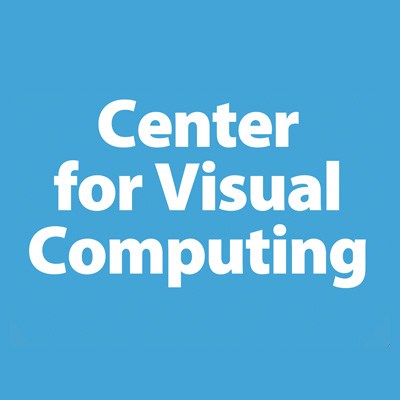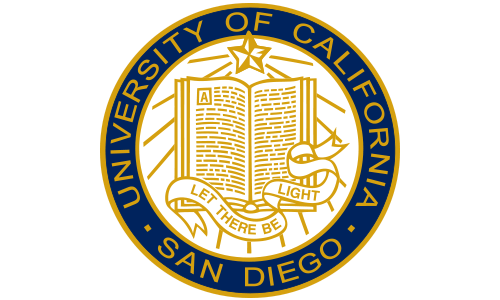Advancing visual computing to change the way we experience reality
With rapid advancements of computers, cameras, and mobile devices, we are nearing a future where virtual reality is no longer virtual. Although we are still capturing 2-dimensional images with our cell phones and have recently just experienced the growth spurt of social media, we are on the cusp of a revolution in visual computing, quickly venturing into another phase of the digital age where the ways in which we capture, display, and share images will entirely change to accommodate more realistic experiences. To facilitate these breakthroughs, the Center for Visual Computing at the University of California, San Diego (UC San Diego) brings together experts in computer graphics, computer vision, computational imaging and augmented reality to make significant, long-term contributions to visual computing and imaging technologies.
Directed by Professor Ravi Ramamoorthi, the UC San Diego Center for Visual Computing is motivated by three key trends: the increasing push towards mobile computing, the ability to create photorealistic images, and computer vision and scene understanding. The visual computing technologies being developed at the Center can transform the definition of capturing an image, shifting photography from 2D to 3D, allow people to have completely realistic virtual experiences in real-time, and wire machines to understand and perceive the natural world to assist humans. At UC San Diego, researchers have contributed very realistic imagery to the creation of movies like Avatar and The Lord of the Rings or games such as Halo, and were recognized for their techniques with the Technical Academy Award. Now, in collaboration with the Cognitive Science department, the Qualcomm Institute San Diego Division of Calit2 and the Scripps Institute of Oceanography, there is immense potential at the Center to further bring these technologies into the real-time domain and combine them with augmented reality applications.
Current research areas include:
- Mobile Visual Computing and Digital Imaging: Researchers at the UC San Diego Center for Visual Computer are changing the way we image, display and capture the visual world by developing techniques to capture the environment via mobile phones, improved computational imaging, computer vision in the wild, and advanced rendering on mobile platforms. This technology will not only transform the way that cameras on mobile devices are built, but also empower the broader field of imaging and computer graphics and vision for capturing full three-dimensional depth.
- Interactive Digital Augmented Reality: By achieving real-time photorealism, researchers hope to create photograph-quality images at interactive frame rates to enable digital reality rendered in real-time. Prof. Ramamoorthi, Director of Center, has already been commended for creating realistic images with real-world illumination like sunlight used in Avatar, and his colleague Prof. Henrik Wann Jensen for replicating the translucent human skin used in The Lord of the Rings. Both techniques are widely recognized and are continually applied to other projects in the domain. Developing the ability to render and mix real and virtual content seamlessly and realistically in real-time will not only strengthen realistic game and film content, but also enhance immersive virtual reality experiences.
- Understanding people and their surroundings: Computer vision and scene understanding is really coming of age, enabling fundamentally new abilities in scene characterization. Automating computer understanding of our visual world, from the imaging of small-scale underwater organisms, to everyday environments, to the scale of a large city, will assist classification and education. In the medical context, this technology will help segment different parts of the brain and tissues. In the environmental context, the computer vision will help classify a dog breed, a bird species, or in mobile microscopy even plankton in their natural environment to advance oceanography. Other applications include core vision technology for computational photography; understanding of city forensics at a large scale; and recognition of urban tribes, such as bikers or surfers.
Bio
Launching on April 1, 2015, the UC San Diego Center for Visual Computing is an endeavor catapulted by the UCSD Jacobs School of Engineering to accelerate breakthroughs and establish milestones in computing technology. Computer graphics is unique because it blends together aspects of the physical world (such as how light is transported), mathematical techniques for analysis and simulation, complex computer software and algorithms, with the creation of stunning visual imagery. Professor Ravi Ramamoorthi, who heads the center, has always had early interests in mathematics, physics and computer science, and possesses sound mathematical foundations with a strong vision for extraordinary computer graphics imagery. He has since broadened his research area to also encompass computer vision and imaging, advancing how humans perceive and sense the world.
Prof. Ramamoorthi and team firmly believe that visual computing is in its transformative stage, and that development over the next five years they will fundamentally change the way people view, capture, and interact with the world. By facilitating these breakthroughs in computer graphics and vision, the Center hopes to better connect humanity.
Researchers include:
COMPUTER SCIENCE & ENGINEERING
Ravi Ramamoorthi, Director
Theoretical foundations, mathematical representations and computational models for the visual appearance of objects, digitally recreating or rendering the complexity of natural appearance. His work on spherical harmonic lighting and irradiance environment maps is widely used in movie production and video games.
Henrik W. Jensen
Photon mapping algorithm for simulating global illumination in complex, three-dimensional scenes used in architecture, design and visual effects for film. First to render translucent materials such as snow, marble, milk and human skin. Academy Award winner for Technical Achievement in 2004.
David Kriegman
One of the most widely cited experts on the subject of face recognition, with applications in social networking, robotics, human-computer interaction and homeland security. Uses machine learning, geometry and physics applied to computer graphics, medical imaging, electron microscopy and coral ecology.
QUALCOMM INSTITUTE
Jürgen Schulze
Making interactive 3-D visualization systems easier to use, including visual display of the data and input paradigms. He uses high-end clustered graphics systems, such as virtual reality CAVEs, to immerse users in the data and 3-D tracked input devices, smartphones and tablets to interact with virtual reality systems.
COGNITIVE SCIENCE
Zhuowen Tu
Intersection of computer vision, machine learning, neural computation and cognition, and neuroimaging. Focused on statistical learning/computing models for structured, large-scale, and multi-modal data prediction. His research has broad applications, notably for medical imaging.
For more information, visit http://www.cs.ucsd.edu/~ravir
In the News
U-T San Diego
Waskul Entertainment
Publications
Videos
Awards
Citation on 2007 Siggraph award
for Ravi Ramamoorthi
Presidential Early Career Award, 2008
for Ravi Ramamoorthi


